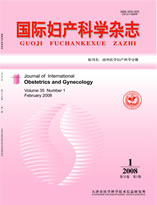|
|
The Effect of the Different Diet Pattern to the Lipids of the Menopausal Female
ZHANG Ya-lin;WANG Hong-xing
2016, 43 (3):
272-273.
Objective: To analyze the influence of the different diet structure to the lipids of the menopausal women. Methods: From February 2014 to February 2015, 24 hours recall method for 3 consecutive days of dietary survey were carried among the 392 light physical labor menopausal feminine who hospitalized in the department of internal medicine in Nantong Maternal and Child Health Care Hospital, excluded the impact of the other factors. Then we analyzed the dietary patterns and divided these women into different group according to the energy and the situation of the ratio among the three capacity nutrients, then compared the blood lipids among the groups. Results: After investigation we found that there are 6 kinds of different dietary patterns including high energy intake group (group A, n=62), normal energy high carbohydrate intake group (group B, n=53), normal energy high fat energy intake group (group C, n=58), normal energy high protein intake group (group D, n=59), normal energy normal ratio intake group (group E, n=116) and low energy intake group (group F, n=44). There was a significant difference in the numerical value of cholesterol, triglyceride, low density lipoprotein cholesterol, high density lipoprotein cholesterol between the 6 groups of women, the same as the incidence of abnormal(P<0.05). Conclusions: High energy, high fat, high carbohydrate intake may cause abnormal lipid metabolism, especially the high carbohydrate intake may be more prone to blood lipid abnormalities, and the high energy and high fat intake can also cause the abnormalities of cholesterol, triglyceride, low density lipoprotein cholesterol and high density lipoprotein cholesterol.
Related Articles |
Metrics
|

